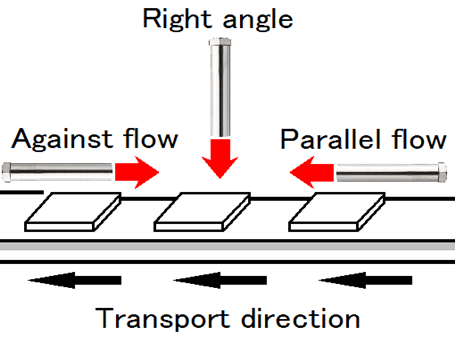INDEX
The case of hot air flows parallel to the material (co-current)
In order to contact a high temperature hot air near a material entrance, a drying speed is large and decreases to urgency after that.
Since material contacts a high temperature hot air a material preheating period and during the surface evaporation, a high temperature hot air can be used.
Although thermal efficiency becomes high, equipment becomes large for making the charge of high dried material.
It is suitable when drying a material sensitive to overheating.
The case of hot air blowing at right angle to the material
With the collision jet stream which makes hot air collide uniformly is used for material, a gas boundary membrane becomes thinner, and since the heat transfer coefficient h and the mass transfer coefficient k can be enlarged, constant drying speed will be made quickly.
The case of hot air flows against to the material (counter-current)
Material is in contact with the high temperature hot air in the vicinity of the outlet, the temperature of the hot air will be low in the vicinity of the inlet.
Material will be relatively constant drying rate through the equipment.
The dryness fraction of material can be raised with comparatively small equipment.
For contact with the high temperature hot air in the falling rate drying period, it seems that it is better to be avoided to use the high-temperature hot air to prevent deterioration of the material.
It is suitable when high-drying an existing heat-resistant material.
Spray drying
Sprayed with a solution or fine suspension in hot air is a way to manufacture the micro-granular material.
Because it is high initial moisture content material, but the material cost of heat per unit mass will be larger, drying time is the way that easy to keep the quality in short heat denaturation substance.
It has been used for drying of food and detergent.
